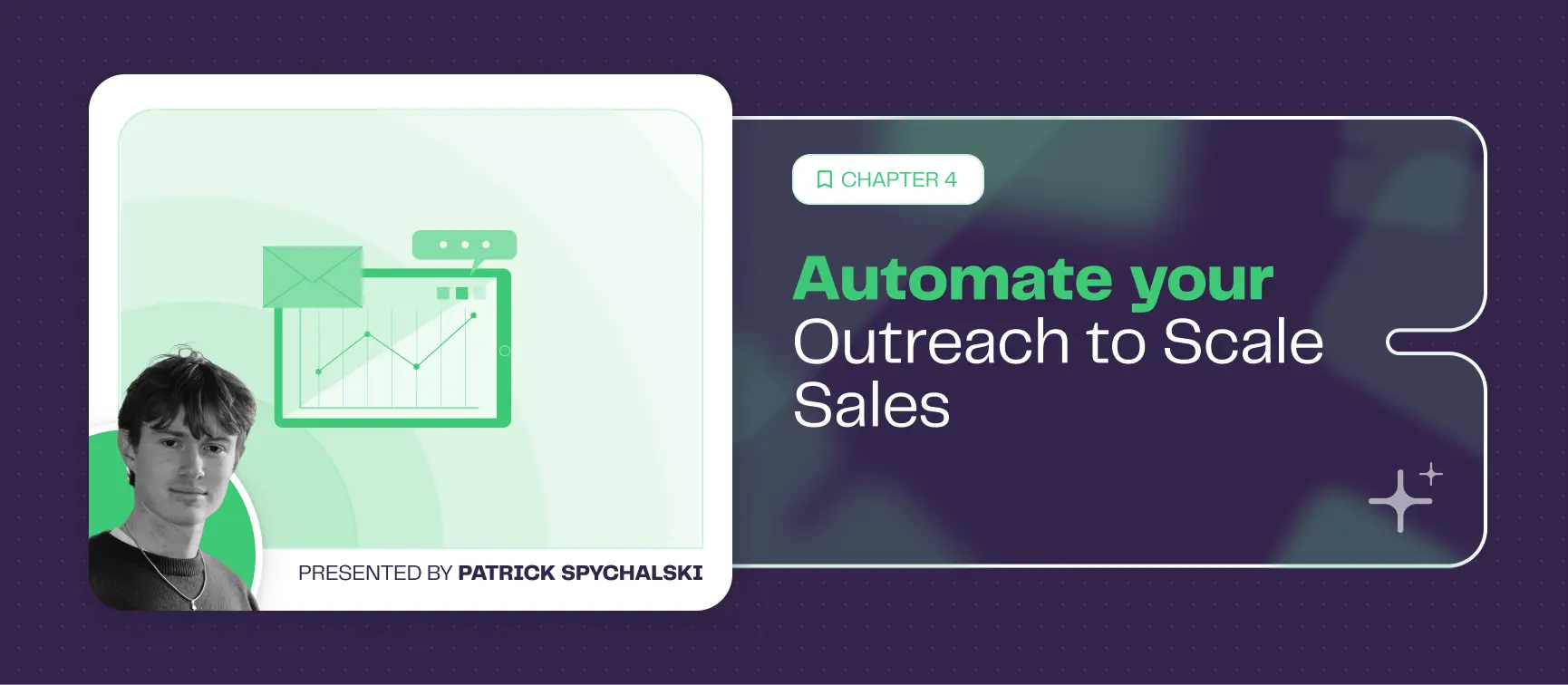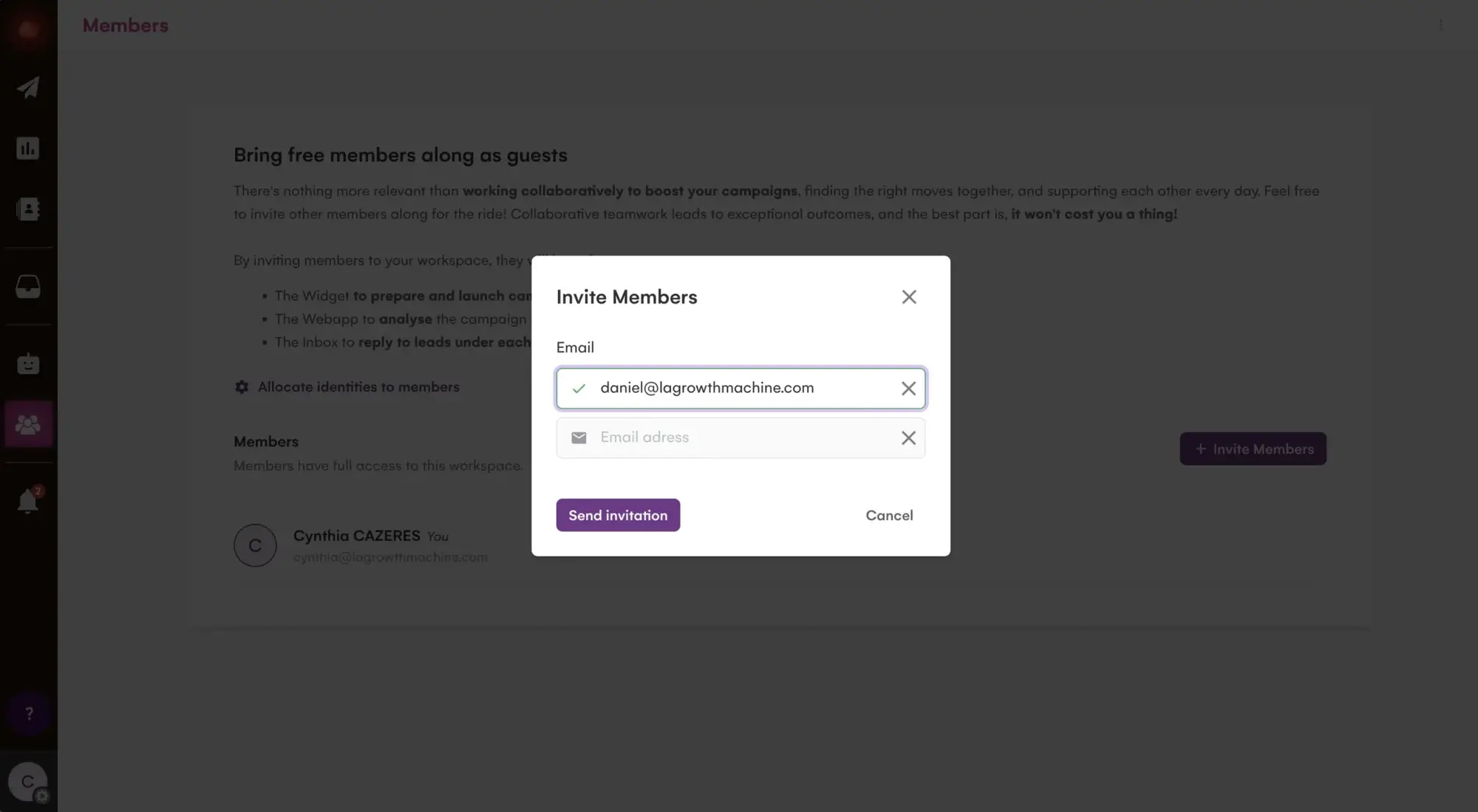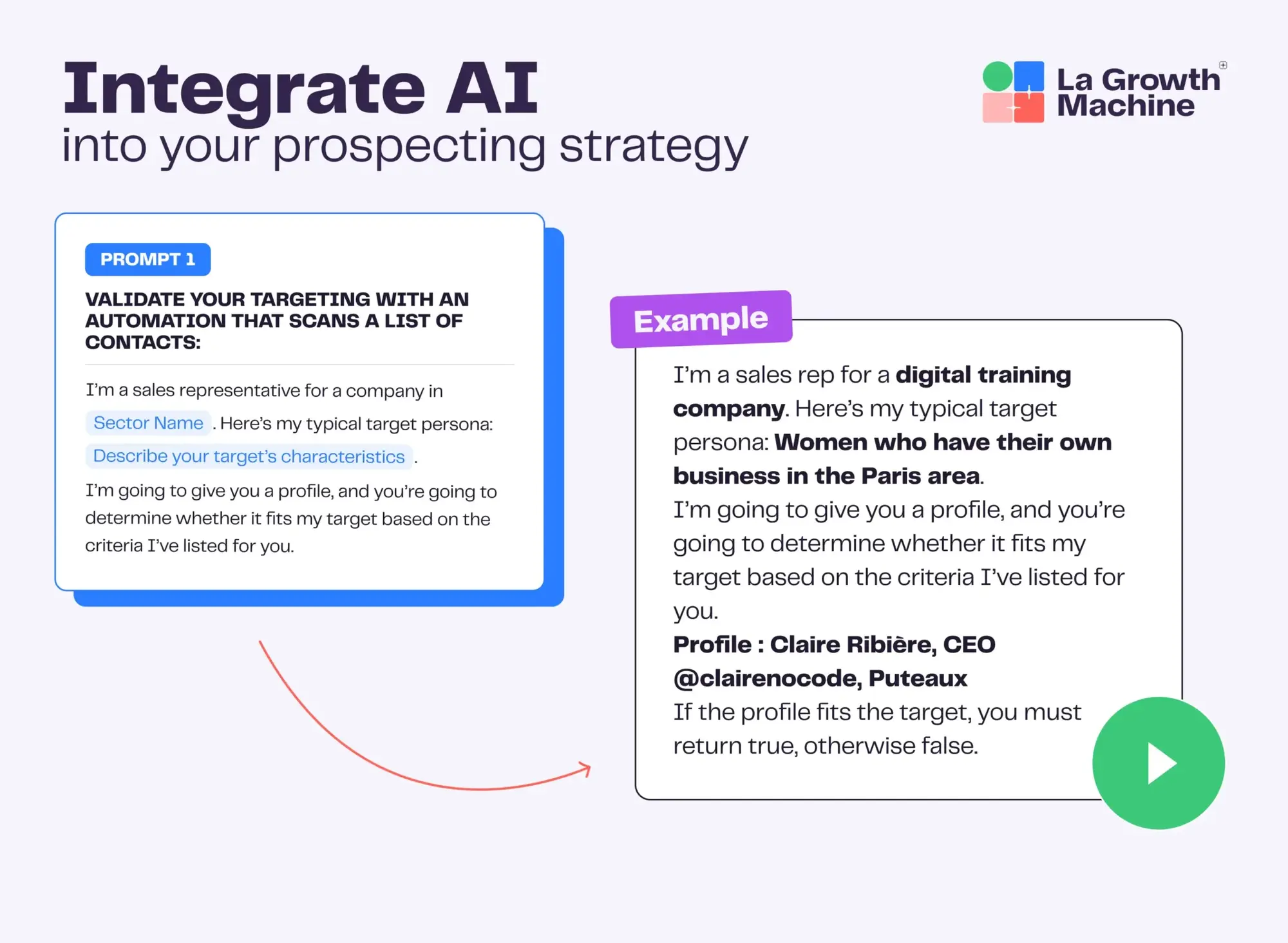
Scaling your Allbound strategy doesn’t mean simply turning up the volume; it’s about doing more of what works at higher precision and with less manual lift. That’s where smart automation and personalization come in.
Done right, you’re not just saving time. You’re creating a system that’s responsive, resilient, and ready to convert across channels and geographies. Let’s break down how to automate outreach with La Growth Machine (LGM) as your Allbound growth engine.
Automating your Allbound processes with LGM
Scaling starts with alignment. LGM makes that alignment operational by integrating sales and marketing into one shared workflow, not on paper but in real-time.
Step 1: Integrate LGM with your CRM
First things first: make sure your lead flow is seamless. Connect LGM to your CRM: HubSpot, Salesforce, Pipedrive, whatever you use.
For full automation, hook in Zapier. This way, whenever a new lead enters your CRM (from a webinar, lead magnet, or demo request), it’s auto-synced to your LGM campaign. No spreadsheets. No delays. Just plug-and-play prospecting.
Step 2: Start building your workflow
Your base sequence starts with a LinkedIn connection request. Add a short, friendly note to warm the contact. LGM handles the send.
In the beginning, keep it broad: everyone gets contacted. Once live, monitor performance and start layering in filters: job title, location, company size, previous interactions.
Your goal? Let the system refine targeting while you focus on copy and timing.
Step 3: Add personalized follow-up with a voice message
Here’s where LGM shines. You can send personalized LinkedIn voice notes, using AI-generated audio that mimics your voice and drops in the lead’s first name. Creepy-good.
But make it human. Keep it under 15 seconds. No pitch. Just open the door:
“Hey Laura, saw you checked out our case study on retail automation. Curious to hear your take.”
The result? 36% reply rate. From a voice message.
Step 4: Close the loop with non-converters
Some leads won’t bite, at least not right away. Don’t ghost them. Use a short final message or email to ask why.
Something like: “Totally understand if the timing’s off. Mind sharing what held you back?”
Even if they don’t convert, this gives you data. And sometimes, it re-engages cold leads. LGM’s exit conditions make it easy to trigger these fallback flows automatically.
Bonus: Use guest mode to align teams
With “Guest Mode,” sales and marketing teams can collaborate on the same campaign, reviewing copy, timing, and engagement rates. There will be no more Slack ping-pong to ask, “Who wrote this email?”

Process optimization through AI
AI vs. Automation: What’s the difference?
Let’s be clear. Automation handles tasks. AI handles decisions.
Automation sends the message on Tuesday at 10 a.m.
AI reads the latest LinkedIn post from your lead and suggests a new opening line for your follow-up.
You need both. But they serve different roles.
Real-world example :
Let’s say a lead just posted about hiring five new sales reps.
Instead of, “Hi Julia, hope you’re well,” your message becomes:
“Saw you’re expanding your sales team, congrats! Curious how you’re structuring onboarding right now, we’ve helped others streamline that.”
LGM makes this happen by plugging LinkedIn activity into AI, extracting themes, and feeding them into your workflow.
AI-Powered personalization: Beyond {First_Name}
Hyper-personalization is no longer optional, and AI is your leverage point.
We’re not talking about slapping the job title into a subject line. We’re talking about real-time contextual messaging:
- A prospect cancels a subscription: AI suggests a tailored win-back message based on their reason for cancellation.
- A lead posts about launching in Spain: AI rewrites your pitch to highlight geo-specific features or use cases.
This works only if your data is clean, structured, and accessible. Garbage in = garbage out. So, before you scale, get your data house in order.
Using AI for scraping and targeting
Let’s talk about prospecting at scale.
When you’re running international campaigns, precision targeting gets exponentially harder. AI helps by:
- Scrap all the leads that match your ICP
- Vetting leads with a defined prompt (“Show me decision-makers at B2B SaaS firms in fintech who recently adopted HubSpot”)
- Segmenting by industry, region, and behavior
- Dynamically adjusting sequences based on lead attributes
But again, it hinges on quality prompts and segmentation. Don’t spray and pray. Be surgical.

Tip: Use prompt templates like this one to train your AI to think like your SDRs.
Using AI for follow-ups: Draft, don’t dispatch
Best practice: Let AI draft, but keep a human in the loop. Don’t fully automate your follow-ups unless you’re okay with robotic tone and awkward phrasing.
Instead:
- Use AI to summarize long email threads
- Generate new angles based on what the lead has said
- Extract objections and propose responses
AI should support your reps, not replace them.
How LGM Integrates AI
Here’s how AI is baked into LGM out of the box:
- Smart message generator that adapts tone and context
- LinkedIn voice message scripting and delivery
- Personalized AI videos with integrated tools like Sendspark or Weezly for a more engaging and impactful outreach
- Automated response suggestions based on campaign activity
- Out-of-office detection to pause and resume sequences at the right time
All of this gives you scale without sacrificing human touch.
Scaling internationally? Here's how Allbound adapts
When you go global, cold outreach gets messy—fast.
Your stack needs to keep up:
- Use a global CRM with regional tagging
- Sync outreach tools (like LGM) across time zones
- Customize copy by country, not just language, but cultural nuance
- Segment your audiences by market maturity and local pain points
And yes, LinkedIn may not be the first touchpoint in every country. In some regions, email is king. In others, WhatsApp or local forums dominate. Allbound means adapting to the local buyer journey.
The best move is to run test sequences. Launch 50-lead A/B tests per ICP, per region. LGM makes this easy with branching logic and reporting by segment.
And don’t forget the human layer. Use native speakers when possible. Local fluency = trust.
Takeaways
Scaling your Allbound strategy doesn’t mean sending more messages. It means building a system that runs efficiently, personalizes at scale, and adapts in real time.
Here’s how to make that happen:
- Automate outreach with LGM and CRM integrations: No more manual lead imports or delays—your pipeline stays up to date, automatically.
- Structure multichannel sales workflows: Design LinkedIn, email, and voice sequences that run on autopilot, with logic tailored to lead behavior.
- Apply AI outreach methods to increase relevance: AI helps you craft smarter messages based on real-time actions, not static fields.
- Use AI personalization to stay human at scale: From voice notes to contextual follow-ups to video prospecting, your messages sound personal, even when fully automated.
- Localize your outreach as you expand: Every region responds differently. Test, segment, and adapt by market, language, and channel.
- Keep humans in the loop: AI drafts and optimizes, while you review and approve. That’s how you scale without losing authenticity.
The result: higher precision, less manual work, and a system that helps your team spend less time guessing—and more time closing.
